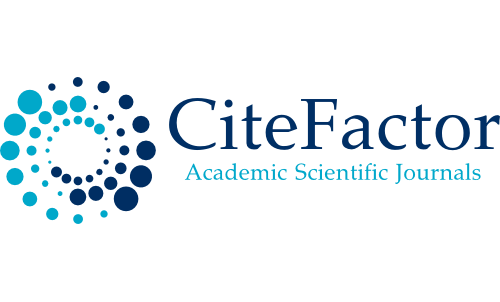PENGEMBANGAN SISTEM CERDAS UNTUK PREDIKSI DAFTAR KEMBALI MAHASISWA BARU DENGAN METODE NAIVE BAYES (STUDI KASUS: UNIVERSITAS PENDIDIKAN GANESHA)
DOI:
https://doi.org/10.31598/sintechjournal.v3i1.523Keywords:
intelligent system, data mining, prediction, naive bayes, CRISP-DMAbstract
Ganesha University of Education or Undiksha is one of the state universities in Bali, precisely in the city of Singaraja. In the admission of new students, Undiksha applies 3 admissions paths, as follows the State University National Admission Selection (SNMPTN), State University Joint Entrance Test (SBMPTN), and Independent Entrance Test (SMBJM) consisting of 2 parts namely Computer Based Test (CBT) and Interests and Talents. Each year the committees are busy with the re-registration of prospective students. In determining the number of students quota for re-registration, they are still using the manual method in form of an excel file, so they want to use a system to do the process. These problems can be overcome by using “Intelligent System for Re-Registration of New Students Prediction using the Naive Bayes Method (Case Study: Ganesha University of Education)â€. The Naive Bayes method is used to determine the re-register probability of the new students so that the number of students who re-register can be determining the new students quota. In developing the system, the researcher use the CRISP-DM methodology as a standard of data mining process as well as a research method. The results of this prediction system research show that the system can predict well with the average predictive system accuracy value of 75.56%.
Downloads
References
Prasetyo, E. Data Mining konsep dan Aplikasi menggunakan MATLAB. Yogyakarta: Andi, 2012.
Oktafia, D. Perbandingan Kinerja Algoritma Decision Tree dan Naive Bayes dalam Prediksi Kebangkrutan. 3, 1–5, 2014.
Salmu, S., & Solichin, A. Prediksi Tingkat Kelulusan Mahasiswa Tepat Waktu Menggunakan Naïve Bayes : Studi Kasus UIN Syarif Hidayatullah Jakarta. Prosiding Seminar Nasional Multidisiplin Ilmu Universitas Budi Luhur, (April), 701–709, 2017.
Ridwan, M., Suyono, H., & Sarosa, M. Penerapan Data Mining Untuk Evaluasi Kinerja Akademik Mahasiswa Menggunakan Algoritma Naive Bayes Classifier. Eecis, 7(1), 59–64. https://doi.org/10.1038/hdy.2009.180. 2013.
Pradnyana G. A. & Permana A. A. J. Sistem Pembagian Kelas Kuliah Mahasiswa dengan Metode K-Means dan K-Nearest Neighbors untuk Meningkatkan Kualitas Pembelajaran. JUTI: Jurnal Ilmiah Teknologi Informasi. [Online]. 16(1), hal. 59–68. Tersedia: http://juti.if.its.ac.id/in-dex.php/juti/article/view/696. 2018.
Prabowo, A.D.R., and Muljono, Prediksi Nasabah Yang Berpotensi Membuka Simpanan Deposito Menggunakan Naive Bayes Berbasis Particle Swarm Optimization, Semarang: Universitas Dian Nuswantoro. Techno.COM, Vol. 17, No. 2, 208-219, 2018.
Saleh, Alfa. "Implementasi metode klasifikasi naive bayes dalam memprediksi besarnya penggunaan listrik rumah tangga." Creative Information Technology Journal 2.3 (2015): 207-217.
Wasiati, Hera, and Dwi Wijayanti. "Sistem Pendukung Keputusan Penentuan Kelayakan Calon Tenaga Kerja Indonesia Menggunakan Metode Naive Bayes (Studi Kasus: Di PT Karyatama Mitra Sejati Yogyakarta)." IJNS-Indonesian Journal on Networking and Security 3.2 (2014).
Taylor. James. “Four Problems in Using CRISP-DM and How to Fix Themâ€. Internet: https://www.kdnuggets.com/2017/01/four-problems-crisp-dm-fix.html, 29 Januari, 2017 [Juni. 8, 2019].
Bustami, Bustami. "Penerapan Algoritma Naïve Bayes Untuk Mengklasifikasi Data Nasabah Asuransi." TECHSI-Jurnal Teknik Informatika 5.2 (2013).
Downloads
Published
How to Cite
Issue
Section
License
Copyright in each article belongs to the author.
- The authors admit that SINTECH Journal as a publisher who published the first time under
 Attribution-NonCommercial-ShareAlike 4.0 International (CC BY-NC-SA 4.0) License.
Attribution-NonCommercial-ShareAlike 4.0 International (CC BY-NC-SA 4.0) License. - Authors can include writing separately, regulate distribution of non-ekskulif of manuscripts that have been published in this journal into another version (eg sent to respository institution author, publication into a book, etc.), by recognizing that the manuscripts have been published for the first time in SINTECH Journal















1.png)




